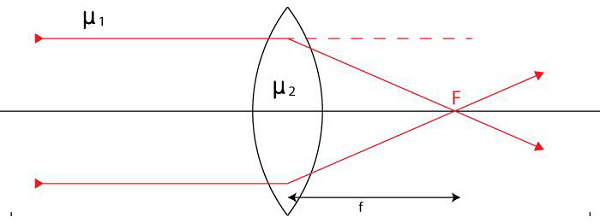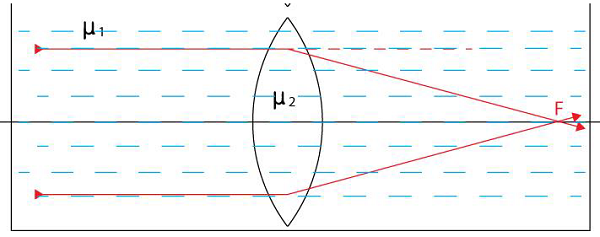Lens In Liquid
Description:

When lens is placed in air i.e. when lens is normally used. We have the following equation −
Pa = 1fa = (μg - μairμair)(1R1 - 1R2) ...... (1)
Where,
Pa = Power of lens in air.
fa = Focal length of lens in air.
μg = Refractive index of glass lens.
μair = Refractive index of air.

PL = 1fL = (μg - μLμL)(1R1 - 1R2) ...... (2)
Where,
PL = Power of lens in liquid.
fL = Focal length of lens in liquid.
μg = Refractive index of glass lens.
μL = Refractive index of liquid.
Dividing equation 2 by equation 1, we get −
PLPa = fafL = (μg - μLμL)(μairμg - μair)
∴ fL = faμL(μg - μair)μair(μg - μL)
∴ fL = μL(μg - 1)(μg - μL)fa
As μL is larger than 1, the denominator becomes smaller than the numerator i.e.
μL(μg - 1)(μg - μL) > 1
Therefore,
fL > fa
As focal length of a lens in liquid is greater than the focal length in air i.e. power of lens in liquid is always smaller than the power of lens in air.
PL > Pair
If the refractive index of liquid is equal to the refractive index of lens then the focal length of lens becomes infinity i.e. rays become parallel and power of lens is zero i.e. no refraction.
Note − If the refractive index of liquid is greater than the refractive index of lens then convex lens will become negative i.e. it will act as a concave lens.

